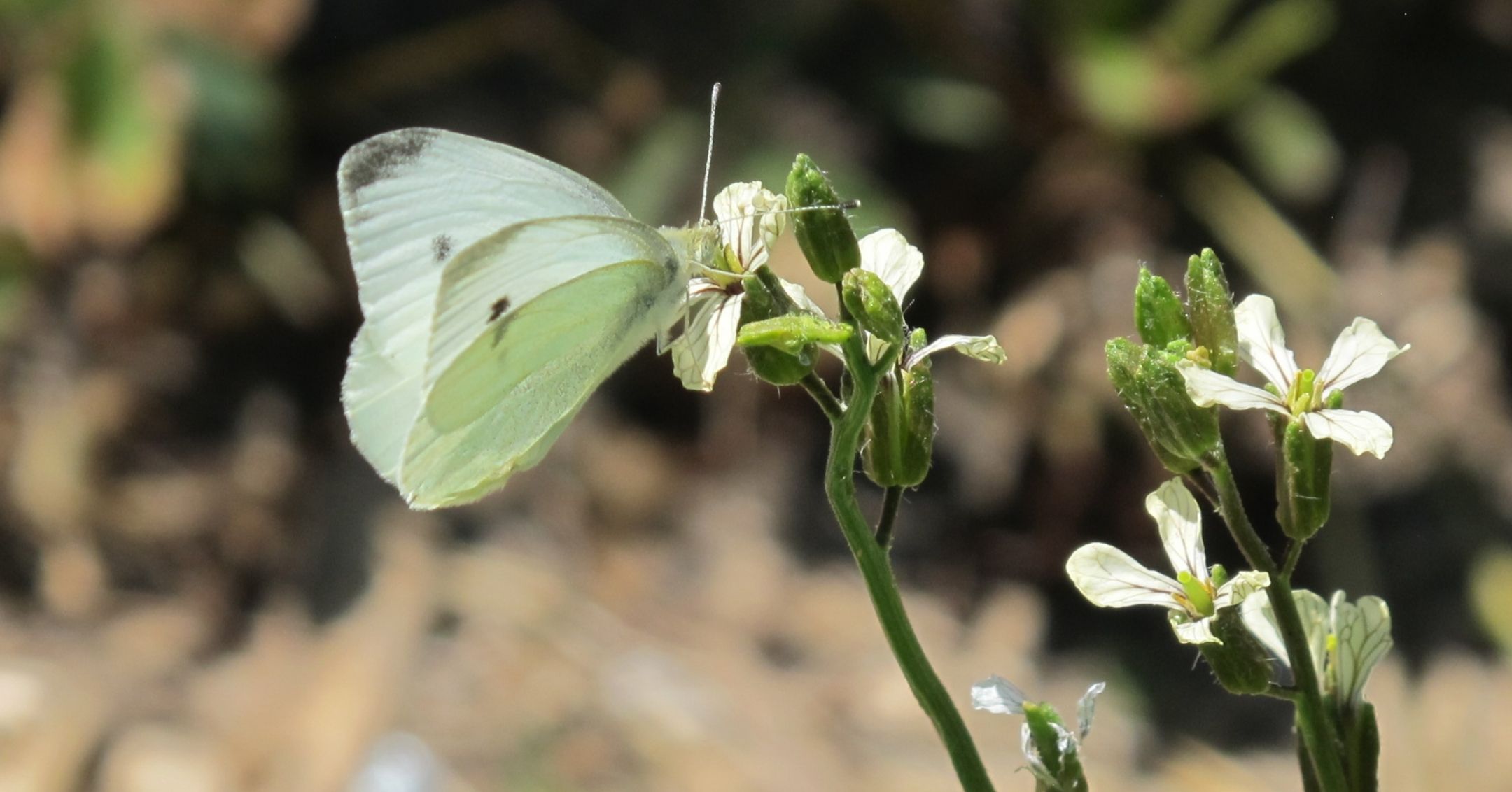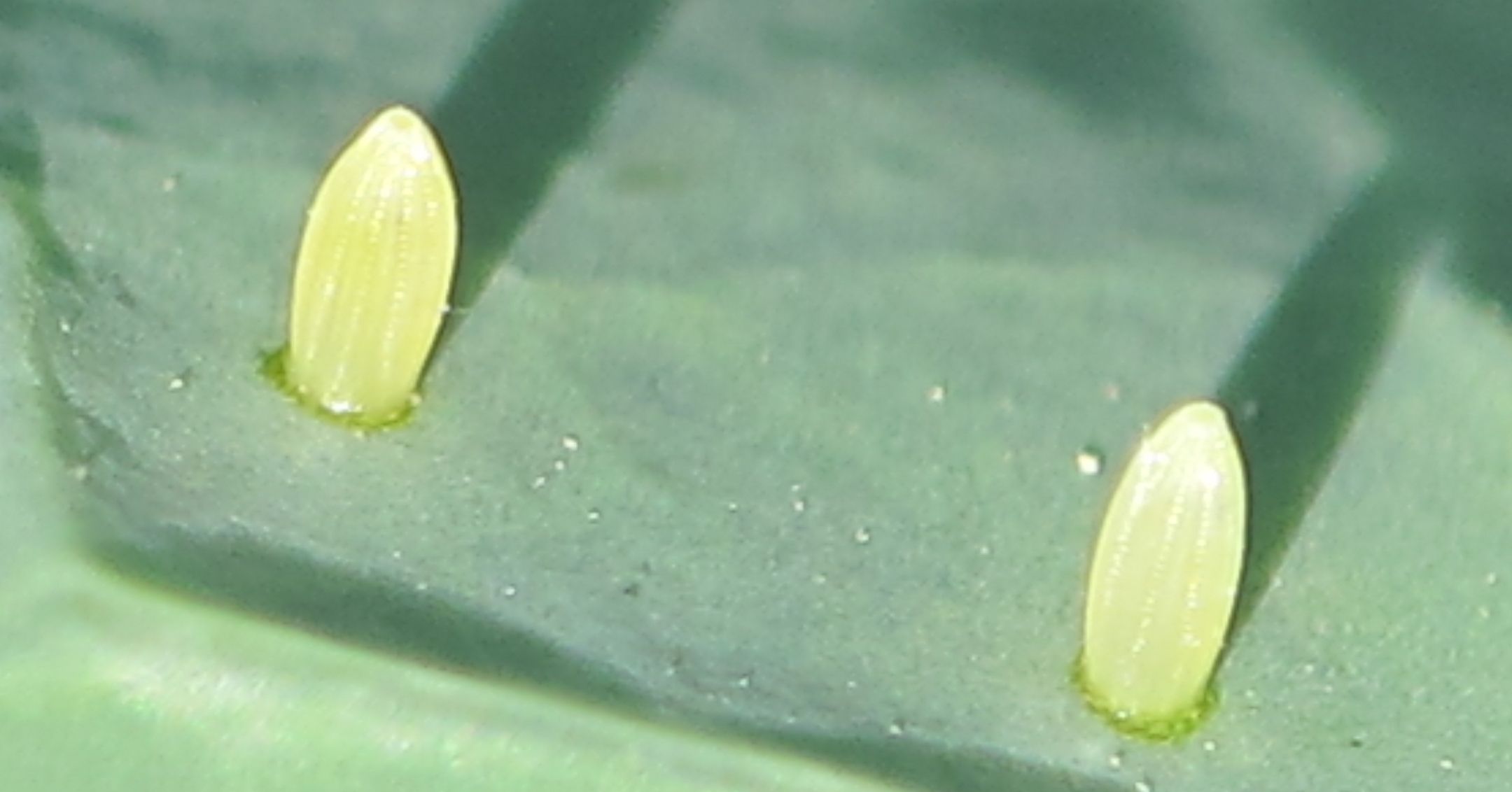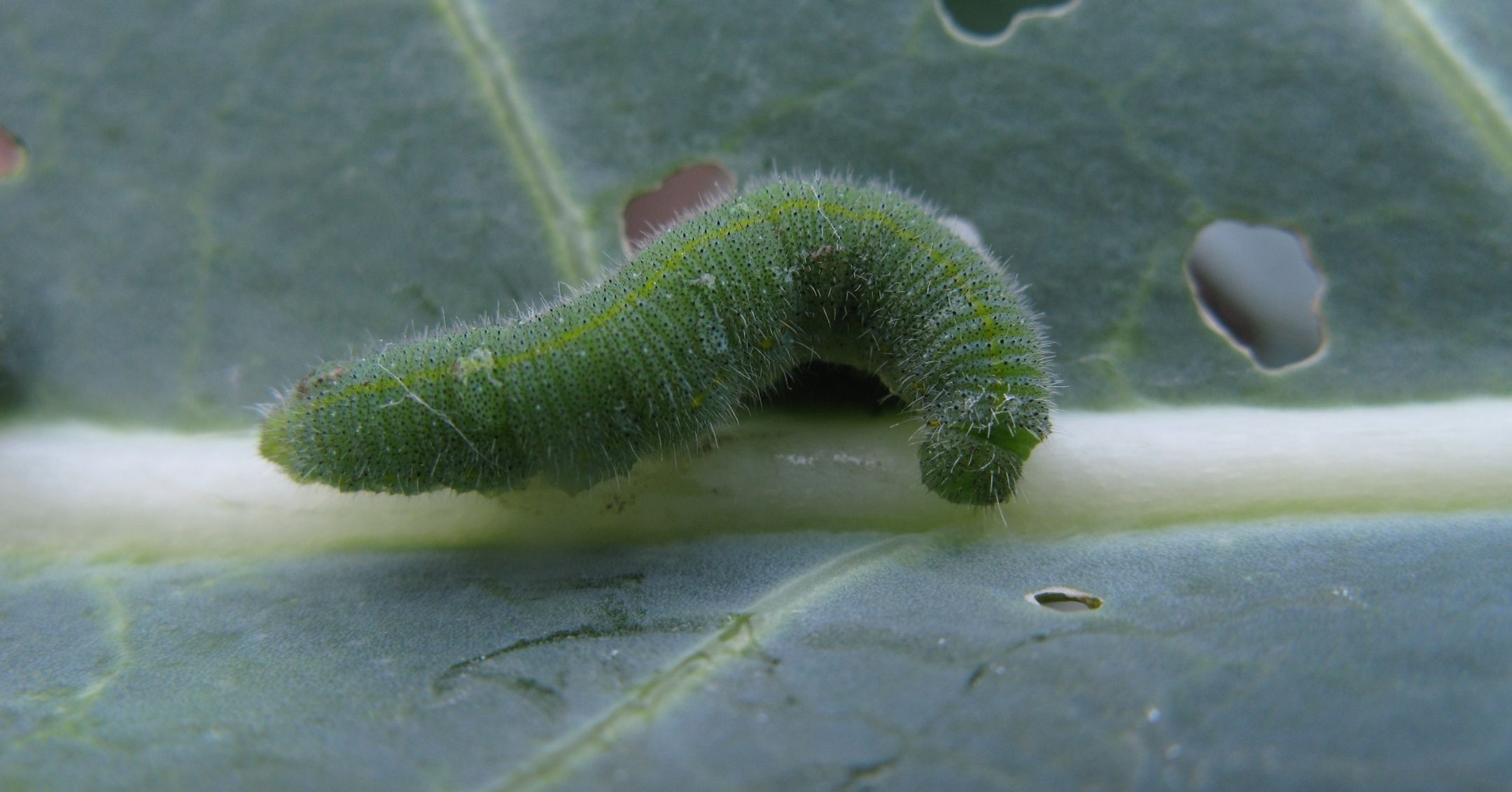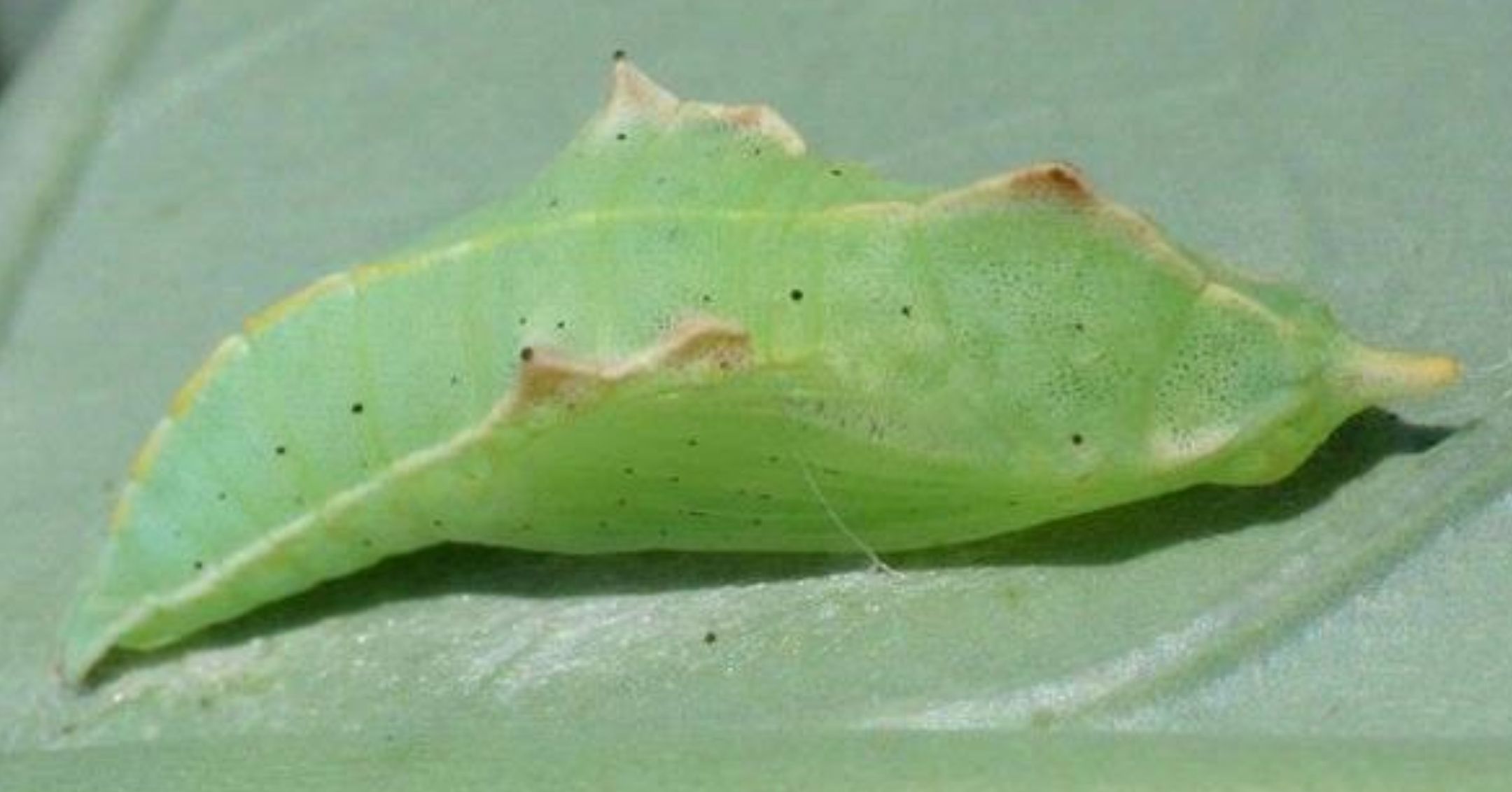Imported Cabbageworm




Description
Adult: White butterfly with a wingspan of about 1.75 in. and one to four black spots on the wings.
Egg: Rocket-shaped, white to cream in color (eventually turning yellow); laid on the undersides of leaves.
Larva: About 1¼ inches long at maturity with a green, velvet-like body, and a yellow-orange stripe down the center of the back.
Pupa: Green in color with yellow stripes on the back and sides; there is no outer cocoon.
Life History
Overwinter as pupae near host plant debris and emerge as adults in mid-spring. Eggs are laid singly on the undersides of outer leaves and hatch after 4-8 days. Larvae mature after 2-3 weeks and pupate on the host plant. Pupation takes 1-2 weeks and emerged adults mate and lay eggs for a second generation. One generation takes about 3-6 weeks from egg to adult and 3-5 generations can occur each year.
Damage
Imported cabbageworm prefers broccoli, cabbage, and cauliflower, but will feed on all cole crops. Larvae feed on outer leaves, resulting in round holes. Frass (excrement) can stain or discolor broccoli and cauliflower heads. As crop heads develop, cabbageworms feed on outside leaves and bore into heads, resulting in unmarketable produce.
Monitoring
- Scout weekly. Start at the button stage (before cauliflower and broccoli heads begin to elongate and expand). Pull 10 leaves from 10 different plants at 10 different locations of the field to total 100 leaves. Look for small larvae and eggs on the undersides of leaves and larger caterpillars toward the center of the plant or near the midribs of leaves. Watch for the white butterflies flying during the day. Scout for other caterpillars at the same time.
Management
Cultural
- Plant cabbage as an early crop. Harvest before cabbageworm populations build to damaging levels.
- Plant resistant varieties to lessen cabbageworm damage. Resistant varieties include: ‘Mammoth’, ‘Red Rock’, ‘Chieftan Savoy’, and ‘Savoy Perfection Drumhead’.
- Harvest as early as possible and destroy or plow under plant residues.
- Rotate crops and distance susceptible hosts from current and previous susceptible crop plantings.
- Use row covers to exclude butterflies from laying eggs on host plants. Remove covers during flowering for pollination.
Chemical
If 2 or more medium sized larvae are found per 10 leaves at the button stage, two sprays will be needed: 1) a spray at button stage and 2) a clean-up spray 7-10 days before harvest.
Biological
Natural enemies can be a major contributor to reductions in cabbageworm populations. Trichogramma wasps and tachinid flies parasitize cabbageworm eggs, pupae, and larvae. Commercially purchased Trichogramma can be released at peak flight of cabbageworm as an effective form of control. Bacillus thuringiensis var. kurstaki (Bt) and spinosad (e.g. Entrust) are especially effective when applied to young caterpillars of imported cabbageworm.

